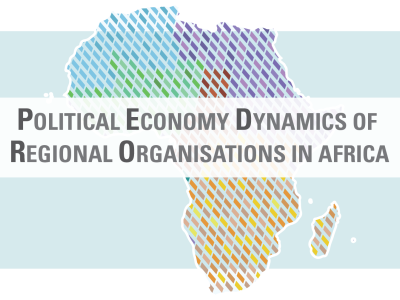
Identifying an Aid for Trade Agenda: Dialogue meeting on Challenges of Changing Agricultural Markets in the context of ACP-EU Trade
This report has been written by Corinna Braun-Munziger (ECDPM) and Solène Sureau (CTA) with the editorial support of Vincent Fautrel (CTA), Francesco Rampa (ECDPM) and Kathleen Van Hove (ECDPM). This report provides a record of the main points emerging from the roundtable discussion. It does not pretend to be an exhaustive account of the meeting's discussions. It does not necessarily reflect the views of its authors or CTA and ECDPM.
Summary
While ‘aid for trade’ (AfT) has been extensively discussed in recent years in multilateral fora, there have been very limited opportunities to specifically look at how the AfT initiative can support ACP countries in facing agricultural market challenges, in particular those arising from the changing context of ACP-EU agricultural trade relations. Recognising the need for further reflection on these issues, CTA and ECDPM organised in April 2008 in Brussels a dialogue with ACP and EU stakeholders with a view to identify an AfT agenda for the agricultural sector.
The meeting reviewed the implications for ACP-EU trade of the process of CAP reform, the evolution of EU markets for food and agricultural products and the EU’s bilateral and multilateral trade policies. In terms of ACP agricultural exports to the EU the core analysis highlighted the challenge facing the ACP with regard to either moving up the value chain to reduce dependence on basic agricultural commodity prices or shifting patterns of production away from serving ‘necessity purchase’ markets (where in the medium term EU prices are stagnant or declining) towards serving ‘luxury purchase’ markets where prices are more buoyant. Participants further noted the growing price competitiveness of EU food and agricultural exports and the need for this reality to be built into any final EPAs. A key question raised was how AfT support could best be used by ACP countries in responding to the challenges arising from changing market conditions.
Possible ways forward in this regard were explored in a series of associated papers which looked at:
the experience of agricultural-adjustment programmes in the ACP banana and sugar sectors and under the EU’s internal rural-development programme;
the lessons from production and trade adjustments under the NIPs in Kenya, Uganda and Tanzania;
the comparative experience of rural-development programmes in the French Caribbean overseas territories and the neighbouring Caribbean countries benefiting from sugar-sector adjustment support.
A number of lessons emerged from this review and from the plenary discussions, namely:
the difficulties faced in working through ACP governments in extending support to what need to be private-sector-based productions and trade-adjustment processes;
the importance of ensuring that production and trade adjustments are ‘market led’;
the importance of getting to grips with the role to be played by the private sector, more specifically the question of under what circumstances and in what form public aid can be deployed in support of private-sector-led restructuring initiatives designed to achieve public-policy objectives with regard to economic diversification, structural economic transformation and employment creation;
the particular problems faced in extending production and trade-adjustment support to smallholder farmers;
the need for rapid and flexible support to production and trade adjustments in ACP food and agricultural sectors;
the need for dedicated financial instruments to support production and trade adjustments in ACP countries.
The comparative review of the experience of the French overseas territories in the Caribbean and the beneficiaries of the ACP sugar-protocol accompanying measures highlights how EU internal support to production and trade adjustment directs investment to those activities which follow market trends and evolving consumption patterns and which seek to shift patterns of EU production to serving ‘luxury purchase’ markets (which are less vulnerable to competition from advanced developing-country exporters in the era of trade liberalisation). The experiences analysed further show the need for the adoption of a coherent and integrated approach to supporting production and trade adjustment, embracing assistance in addressing human resource constraints, physical infrastructure constraints in the public sector, investment constraints on the physical potential of the private sector and marketing constraints. The case studies presented illustrate the importance attached by the EU to using public funds to ‘pump prime’ production and trade adjustments in the food and agricultural sector, particularly in small and remote territories such as those French overseas territories of the Caribbean. Similarly, in the ACP context a key challenge is to effectively deploy public funds to ‘pump prime’ market-led, private sector based adjustment processes, designed to attain clearly articulated public policy objectives and to establish aid deployment procedures which allow this to be achieved quickly and efficiently.
Most participants raised the need for flexible and fast funding procedures to respond to private sector needs under changing market conditions. They also stressed that integrating AfT measures into broader national development plans and sectoral policies requires a careful assessment of demands, which can be a lengthy process in some cases. Several participants underlined that current delivery mechanisms are not sufficient to appropriately support private sector initiatives. Accordingly, new ways of financing should be explored, moving beyond the traditional state-to-state cooperation. The need to involve all stakeholders including private actors into the decision-making process on AfT measures was stressed repeatedly throughout the conference. This implies for instance fostering public-private dialogue structures and supporting private sector organisations, including associations of small farmers.
As a follow up to the two-day exchange, participants suggested to hold similar meetings at regional level in order to develop ideas further.





